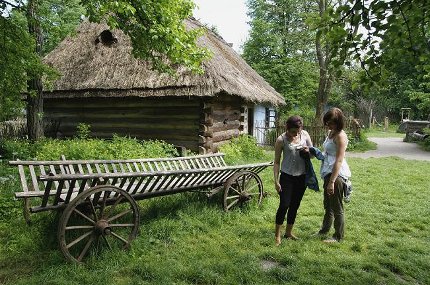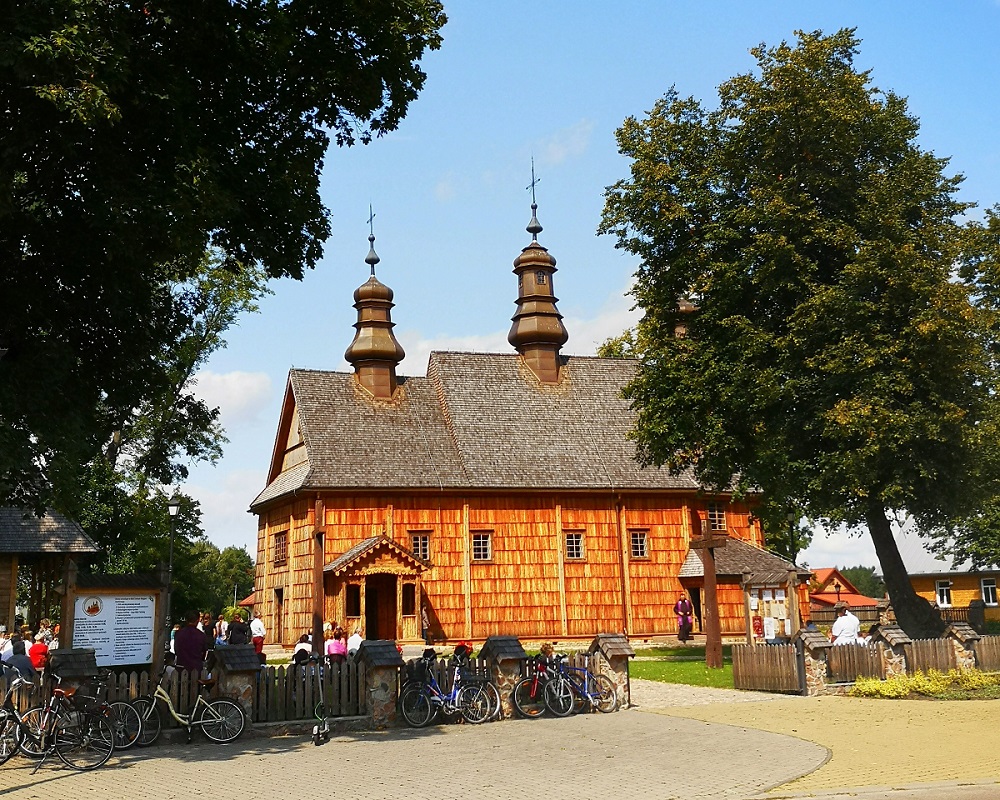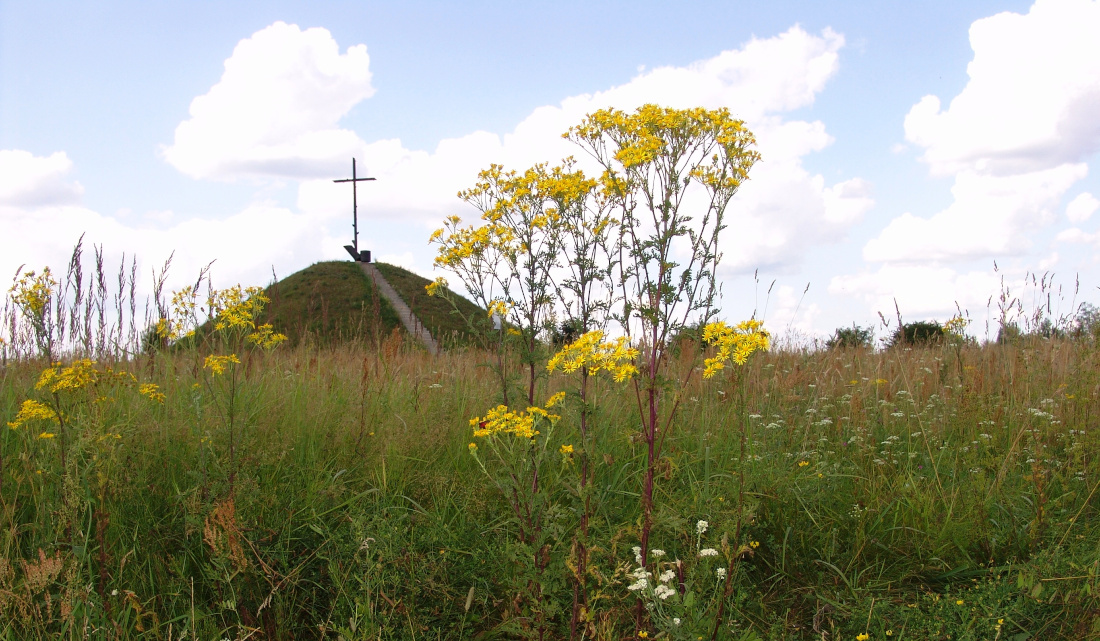a-j

A village upon the Vistula River located between Puławy and Dęblin, the site of a lost battle of the Polish army against Swedish invaders in 1656 and of the 1672 confederation of the Polish nobility under the leadership of Stefan Stanisław Czarniecki (nephew of Hetman Stefan Czarniecki). The main historic monuments include the late-Renaissance parish church from 1628-36, featuring elements of Dutch Mannerism, and the House of Loreto decorated with sculptures of the prophets, which was modelled on the design of the Santa Casa in Loreto and built in the years 1636-38. Another place worth visi ...

The most valuable monument of the village situated among the forests of the Solska Forest is the larch church from 1768 standing in the center of Górecko Kościelne, erected in memory of the revelation of St. Stanislaus. Nearby, on the Szum River, there is a XIX century wooden chapel "on the water", also dedicated to this saint. A beautiful oak alley leads from the church - the oldest tree is about 500 years old. ...

A village in the Roztocze located in the valley of the Wieprz River, with the Guciów Farmstead - a quaint guesthouse and restaurant accompanied by a private museum of old rural architecture (offering presentations of folk traditions), a gallery of paintings by the Roztocze artists, and a collection of fossils and meteorites found in the area. ...

20 kilometrów na północ od Włodawy znajduje się miejscowość Hanna. Piękne położenie wsi w dolinie rzeki Bug, z dala od dużych ośrodków miejskich i przemysłu, stwarza doskonałe warunki do pełnego wypoczynku w otoczeniu przyrody. Według legendy jej nazwa pochodzi od imienia królowej Anny Jagiellonki, która kiedyś zatrzymała się tutaj w drodze na Ruś. Warto tu zajrzeć aby zwiedzić Centrum Religijno-Zabytkowe, poznać historię cudownego obrazu Matki Bożej Hanneńskiej, zobaczyć XVIII-wieczny drewniany kościół z bogatym barokowym wnętrzem oraz mu ...

A village in the Polesie Region with a small private folk museum run by the Society of Lovers of Material Culture of the Chełm Region and Podlasie. Next to the museum there is a 1702 Orthodox Church of St. Paraskeva and St. Anthony of Kiev, a former Greek Catholic temple. Every year the village holds the Hola Fair and a church fair of St. Anthony of Kiev. ...

A village in the Polesie Region known for camomile plantations ("The Land of Camomile" theme farm). The local Centre for Regional Education organises workshops in traditional handicraft and events promoting natural herb farming. There is also a village spa – the first of its kind in the region. ...

One of the former Cherven Grods; in the XIV and XV centuries a town with a royal castle, the place of courts in Polish-Lithuanian border disputes. In 1413, during a congress of the Polish and Lithuanian nobility, King Władysław Jagiełło and the Grand Duke of Lithuania Vytautas concluded the union of the two countries. This fact is commemorated by the Union of Horodło mound, erected in 1861. The remains of the royal castle are earth embankments (called the Jagiellonian embankments) and stone lions, set in the market square. The most interesting monuments also include: a baroque parish chur ...

A town well-known for a busy road and rail border crossing to Ukraine. It is the shortest connection with Lviv. The town features a beautiful Greek Catholic Church of St. Nicholas from 1685 with historic iconostasis and polychromes, a wooden bell tower and a brick gate from the turn of XVIII and XIX centuries. ...

One of the former Cherven Grods, located by important trade routes, a city since 1400. The oldest preserved monuments date back to the second half of the XVIII century. These include: the post-Dominican church of st. Nicholas, the church of st. Stanisław Kostka (former Greek Catholic church, and currently a Bernardine sanctuary with a miraculous image of Mother of God from Sokal, Ukraine), a baroque parish house (the birthplace of Aleksander Głowacki, better known as a famous writer Bolesław Prus), the court of the Du Chateau family (now a museum). In the XIX century, brick stalls and shops ...

One of the most important Orthodox sanctuaries in Poland, with a male monastery founded in the XV century. The most valuable monuments include: an orthodox church complex from the turn of XIX and XX centuries, an orthodox church of St. Onuphrius together with gate buildings and a belfry, and outside the walls, two chapels - of Dormition of the Mother of God and of the Holy Spirit. ...
Page 4 of 5













